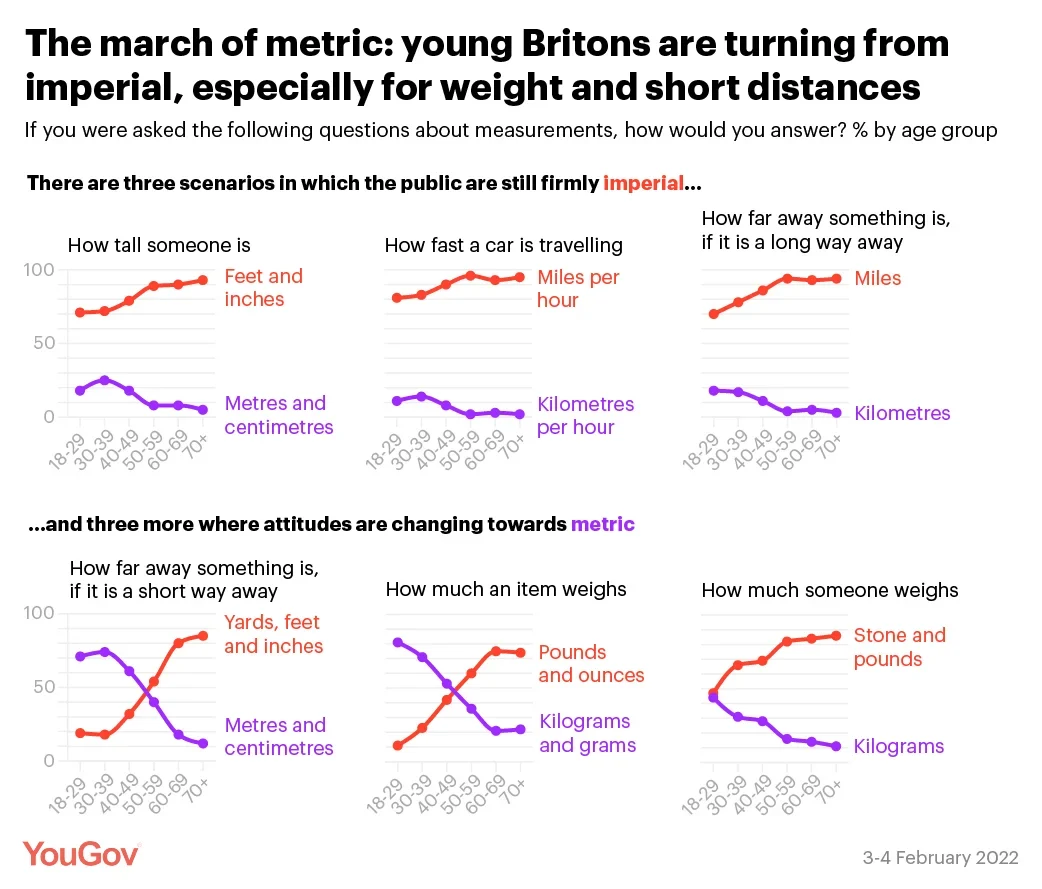While young Britons still tend to use imperial for height, temperature, speed and long distances, they now use metric for short distances and weight
A recent viral meme has poked fun at the mish mash of measuring conventions used in Britain. Confusing as our practices are, the already-complicated flow chart guide didn’t include an additional layer of complexity: age.
The results of a new YouGov survey show that younger generations are turning away from some imperial measurements much faster than others.
Imperial still reigns supreme in three of the seven scenarios we asked about: when describing someone’s height, how fast a car is travelling, and long distances. More than eight in ten Britons (82-90%) still describe these things using imperial measures.
Younger Britons are more likely to use metric descriptions for these measurements, but they are still very much within the minority even in their own age groups.
However, metric is making grounds in three key areas.
First is short distances, with the under 50s firmly on the metric side – using metres and centimetres to describe how close a nearby object is – while those over 50 are more likely to resort to imperial yards, feet and inches (particularly the over 60s, at 80-85%).

Second is the weight of items. Again, the over-50s are imperial adherents, while those under 50 tend to use metric (especially the under-30s, at 81%). Last year the government announced plans to make it legal once again for shops to sell goods using only imperial measures – something which YouGov found at the time was supported by 43% to 35%.
This could cause problems for half the country: when it comes to understanding the weight of items, 47% of all Britons tend to rely on imperial vs 48% who use metric.
The third is more personal: how much someone weighs. On the face of it, this might not appear to be a battleground, with the 72% who describe their weight in stone and pounds far outweighing the 24% who describe it in kilograms.
However, break the results down by age and we can see a significant shift occurring at the younger end of the spectrum. The youngest Britons surveyed (18-29 year olds) are almost evenly split, with 47% still using imperial but 44% using metric.
This appears to be a very recent trend, with the next age group up – 30-39 year olds – coming heavily down on the imperial side (66% vs 31%). But with the direction of travel across every measure clearly towards greater adoption of metric by younger generations, we can probably expect to see more and more people describing their weight in kilograms as time goes by.
There is also one measure that we asked about where metric is firmly assimilated: temperature. Almost three quarters of Britons (72%) say they use Centigrade to describe how hot it is, compared to only one in five (19%) who say Fahrenheit. Even among the oldest Britons – those aged 70 and above – metric leads by 54% to 36%.










